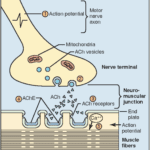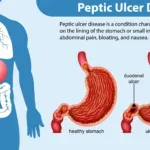Spasmolytics, also known as antispasmodics, are a class of drugs used to suppress muscle spasms or to decrease the tone of smooth muscle in the gastrointestinal tract, the biliary tract, or the urinary tract. These drugs are commonly used to treat conditions like irritable bowel syndrome (IBS), spastic colon, and other disorders involving smooth muscle spasms.
Mechanism of Action
The mechanism of action of spasmolytics varies depending on the specific drug, but they generally work by either:
- Directly relaxing smooth muscle: Drugs like papaverine and drotaverine act directly on the smooth muscle to inhibit contractions. They may work by inhibiting phosphodiesterases, leading to increased levels of cyclic AMP, which in turn decreases calcium influx and causes muscle relaxation.
- Blocking the action of acetylcholine at muscarinic receptors: Drugs like hyoscine (scopolamine) and atropine are anticholinergic agents that block the action of acetylcholine, a neurotransmitter that would otherwise stimulate muscle contractions.
- Calcium channel blockers: Some spasmolytics like diltiazem work by inhibiting the influx of calcium ions into the smooth muscle cells, which is necessary for muscle contraction.
Pharmacokinetics
- Absorption: Spasmolytics can be administered orally, intramuscularly, or intravenously, depending on the drug and the clinical situation.
- Distribution: These drugs are distributed throughout the body and may cross the blood-brain barrier, especially in the case of anticholinergic agents.
- Metabolism and Excretion: Spasmolytics are metabolized in the liver and excreted through the kidneys.
Side Effects
- Dry mouth: Especially common with anticholinergic agents.
- Blurred vision: Particularly with anticholinergic types.
- Urinary retention: Due to relaxation of smooth muscle in the urinary tract.
- Constipation: Due to inhibition of gastrointestinal motility.
- Drowsiness or sedation: Especially with drugs that cross the blood-brain barrier.
Contraindications
- Glaucoma: Especially narrow-angle glaucoma is a contraindication for anticholinergic spasmolytics.
- Prostatic hyperplasia: Due to the risk of urinary retention.
- Severe cardiovascular conditions: Some spasmolytics may affect heart rate and blood pressure.
- Pregnancy and lactation: Always consult a healthcare provider for specific advice.
Clinical Uses
- Irritable Bowel Syndrome (IBS)
- Gastrointestinal cramps
- Renal or biliary colic
- Bladder spasms
- Adjunct in endoscopy procedures
It’s important to consult healthcare providers for an accurate diagnosis and appropriate treatment, including the use of spasmolytics.
Note: This is a general overview and not a substitute for professional medical advice. Always consult with a healthcare provider for medical advice and treatment.
📚 AI Pharma Quiz Generator
🎉 Quiz Results
Medical Disclaimer
The medical information on this post is for general educational purposes only and is provided by Pharmacology Mentor. While we strive to keep content current and accurate, Pharmacology Mentor makes no representations or warranties, express or implied, regarding the completeness, accuracy, reliability, suitability, or availability of the post, the website, or any information, products, services, or related graphics for any purpose. This content is not a substitute for professional medical advice, diagnosis, or treatment; always seek the advice of your physician or other qualified health provider with any questions you may have regarding a medical condition and never disregard or delay seeking professional advice because of something you have read here. Reliance on any information provided is solely at your own risk.









